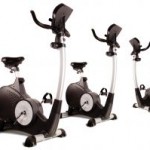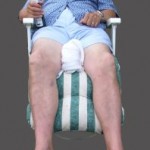Welcome Back!!
Today’s blog is about laying out the facts of how to train for real fat loss. Regular readers will know that I believe you should focus on fat loss, not weight loss. (If you don’t have a copy of my free report on fat loss myths you can get one from the box to the right of this post)
Simply put, after over a decade of my own ups, downs & failures to achieve lasting fat loss I have developed some fairly strong opinions on this issue.
I have come to hold theses opinions through a combination of educating myself by reading articles, chasing down scientific papers, following an ever changing cast of fitness ‘gurus’ and by trying just about every program there has been. Like famous author Tim Ferriss, I have used myself as guinea pig, and I have arrived at some convictions about fat loss.
The biggest mistake I made and the one I still see the most people making is this belief that low intensity, high volume cardio is the best way to lose fat.
Let me tell you this is a crock – not true at all!!
Short sharp cardio (think Tabata’s or sprints) will burn more fat for longer than hours on a treadmill, a stationary bike, stepper, strider or slider. There is a heap of research out there on this. Trouble is many Personal Training organisations, many medicos and other ‘health’ professionals are either using information from textbooks that were old when they did their degrees or else they are playing politics to gain more mainstream acceptance. Doesn’t really matter – high volume low intensity cardio is a mug’s game. Period.Second in line is the belief that doing high volumes of circuit training exclusively is the best means of burning fat.
When I first started coming across the research on the effect of high volume circuit training on fat loss I thought that I had found the Holy Grail. The more I looked the more research I found to support this, the more of the Gurus I found who supported this – it seemed like a no-brainer.
Again – this is not right!!
One of the benefits of being your own guinea pig is that you can judge what actually works and what the effects are.
The truth is that no one exercise modality can or should be used exclusively when fat loss is the goal. What you need is a mix of exercise types that hits different energy systems in your body and works to drive your metabolism.
Using circuit training exclusively I found:
1) That the perception of effort was right up there – these were hard & challenging workouts!! So hard in fact, that I started to collect niggling injuries from too many repetitions.
2) This came about from the high volume of exercises were giving my joints, tendons & ligaments a real beating. I developed overuse injuries and these required me to stop & heal – no fat burning happens when you can’t work out!!
3) The type of exercise done in these ‘fat loss’ circuits did not allow for much weight to be used 9nor could it be safely used) so my strength began to drop off. Rapidly. A beginner may have gotten stronger (if they avoided overuse injuries) but anyone with any time using weights just seems to get weaker.
4) A drop in strength and a lack of challenging weight coupled with high volumes = Muscle loss. High volume circuits when used exclusively as a fat loss modality leads to lean tissue loss which leads to a slower metabolism which leads to shifting any fat just gets harder & harder to do.
5) High Volume Circuits also cause physical stress out of proportion to their benefits which increases your levels of cortisol (everyone’s favourite ‘fat to the belly’ stress hormone) and decreases both Growth Hormone & testosterone release. Certainly not what you want for fat loss.
However this does not mean circuits are bad. Nope they just become bad when they are used exclusively for fat loss and other exercise types & protocols are not used.
An effective, metabolic reconditioning program needs to contain most if not all of the following key factors:
1) Lift weights, heavy weights using compound (multi-joint) exercises. Think Deadlifts, chin / pull ups, squats, overhead presses, clean & jerks or even one-armed push ups. Think 4 – 6 reps and no more than 3 or 4 sets.
Not only does this preserve lean tissue, it promotes strength and better fat utilisation as fuel
2) Train fast but safe. In other words perform your exercises as fast as you can whilst maintaining good form. This engages your nervous system and leads to a faster metabolism.
3) Perform some size work – use weights that you can move for 6 – 10 reps and again no more than 4 sets. Again try for compound moves or bodyweight exercises where you are at a mechanical disadvantage. NB these sets should always come after your heavy sets.
4) Circuit training – no more than 3 stations, no more than 15 – 20 reps a time and only 3 – 4 rounds.
5) Sprint. Great for fat loss, great for your legs, do wonders for your cardiovascular & aerobic systems. Best done either later in the day or the day after your weight / circuit training.
So there you have it – the best way to achieve maximum fat loss via exercise.
Give this style of training a try, and see for yourself!




